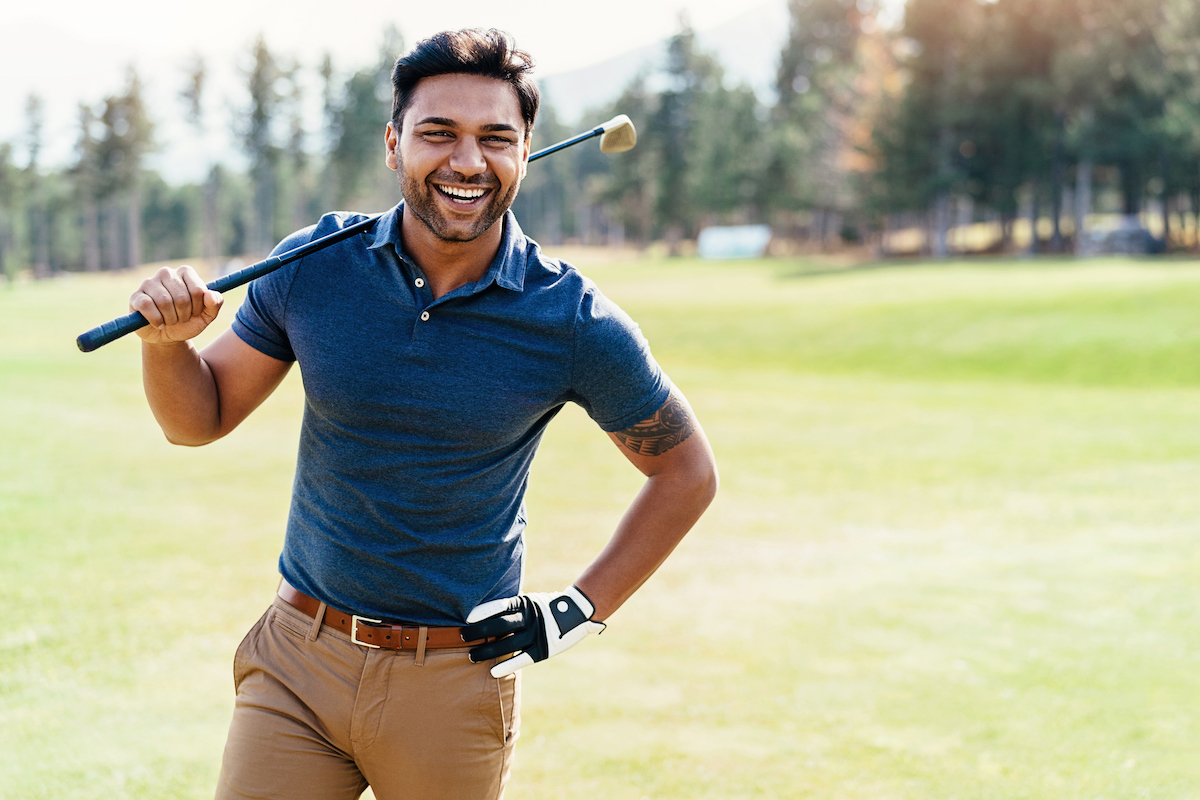
With the weather improving and the greens finally dry, New Englanders are finding their way back to the golf course.
Golf offers many health benefits, including cardiovascular fitness and increased muscle tone that you get from walking 18 holes as well the enjoyment from being out in nature. And while a round of golf can seem like a leisurely walk in the park — unless you’re playing in the Travelers Championship in Cromwell starting June 24 — there is still the potential for a wide range of injuries. Some of the most common are back, shoulder, knee, wrist and elbow injuries. Fortunately, many of these injuries can be prevented.
Back strains are the most common injuries reported in golfers. This is likely due to inadequate preparation, both in the off-season and immediately prior to a golf outing. Golfing places a high demand on the low back muscles during putting and driving.
While putting, the back extensors must support the entire weight of the upper trunk and arms. While driving, the back muscles must control high energy rotational forces to the spine that are unique to the sport. To reduce the risk of injury, it is important to have a sport specific preparation program. During the winter and spring as well as during the golf season, golfers should focus attention on strengthening their core muscles that provide stability to the spine.
Regular aerobic exercise also can help reduce the negative effects of fatigue during golfing. Prior to golfing, it is important to have a light dynamic warm-up. This includes gentle short duration stretches for the hamstrings and low back. Finally, the importance of a proper swing cannot be overemphasized as repetitive use of incorrect technique will predispose even the best conditioned golfer to injury.
Shoulder injuries are common in golf. The shoulder has a high degree of mobility and relies on coordinated muscle action to function properly. As a result, strains or tears of the rotator cuff muscles can occur with the motion of the golf swing. In many cases, an underlying rotator cuff injury may be present that is aggravated by repetitive hard swings.
The best preventative measure is to work on rotator cuff strengthening exercises along with strengthening of the muscles that attach to the shoulder blades. Golfers should have a specific shoulder strengthening program during the winter and early spring for an adequate training effect prior to starting the golf season. Again, technique is important in the prevention of shoulder injuries and most golfers would benefit from a golf swing analysis.
Tendonitis of the elbow affects many golfers. Although tendonitis on the inner part of the elbow (medial epicondylitis) has been designated as “golfer’s elbow”, it is just as common for golfers to experience tendonitis on the outer part of the elbow (lateral epicondylitis). These injuries are due to overuse. Gentle stretches and in some cases braces can be helpful for prevention and treatment of these injuries.
A variety of knee injuries are seen in golfers. In some cases, these are due to walking over uneven ground or losing footing in the rough. In other cases these are due to the rotational forces that are transmitted from the lower extremities to the trunk during a swing. Common injuries include ligament sprains and injury to the shock absorbing cartilage of the knee, the meniscus.
As with most golfing injuries, proper preparation can help to prevent them. Along with the core and shoulder strengthening program, golfers should work on lower extremity conditioning. This includes stretching and strengthening exercises for the hip muscles, the quadriceps and the hamstrings. Also, incorporate balance exercises into your comprehensive conditioning program. Prior to hitting the green, golfers should perform a dynamic warm-up that includes stretches for the hamstrings and quadriceps.
As with any sports injury, it is important that we do not ignore pains experienced during golfing. If you have an injury it is important to initially rest the injured joint, apply ice and compression, and monitor your symptoms. Playing through an injury may lead to further injury. If the symptoms do not resolve with rest and ice or there is severe pain, deformity, or inability to bear weight you should seek medical attention.
Hartford HealthCare’s Center for Musculoskeletal Health can help you remain on top of your game. Click here.
Dr. J. Kristopher Ware is an orthopedic surgeon at the Bone & Joint Institute.



